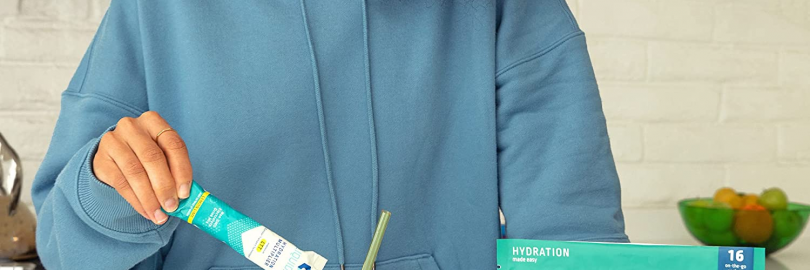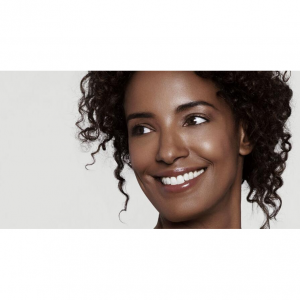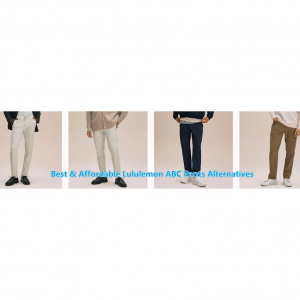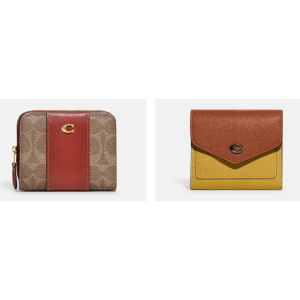
Liquid I.V. vs. Gatorade vs. Pedialyte: Which Makes the Best Electrolyte Drink?
- Liquid I.V. vs. Gatorade vs. Pedialyte: Which Makes the Best Electrolyte Drink?Getting adequate amounts of each electrolyte can prevent an electrolyte imbalance that could actually be life-threatening. While electrolytes are also minerals that you can consume from foods, there are instances when drinking electrolytes is both necessary and convenient. Fortunately, we’ve tested and selected our top picks so you can enjoy the best electrolyte drink to suit your needs. So, let’s explore how to drink electrolytes to keep our bodies (and workouts) electric!
What are electrolytes and why are they important?
Did you know the cells in your body conduct electrical charges?
That’s right, the body relies on and needs these electrical producers otherwise known as electrolytes -- sodium, potassium, chloride, magnesium, calcium, phosphate, etc.
What are electrolytes for?
Electrolytes play a vital role in fluid balance, muscle contraction, nerve stimulation, blood pressure regulation, and more.
For example:
When you sweat a lot or lose fluids through vomiting or diarrhea, you can become dehydrated, which means that your body loses too much water, and the electrolyte levels in your blood drop. This can cause fatigue, headache, nausea, blood pressure changes, muscle cramps, and low energy levels.
The good news is that there are simple ways to prevent electrolyte loss: stay hydrated by drinking plenty of water throughout the day; eat foods that contain electrolytes (like fruits and vegetables); replenish your salt supply by eating salty foods like pretzels or salted nuts; drink sports drinks with electrolytes when exercising intensely for long periods of time; take an over-the-counter supplement like Liquid I.V. or Pedialyte if necessary.
3 Best Electrolyte Drinks For 2025
Best Budget Electrolyte Drink: Pedialyte
Best On-the-Go Electrolyte Drink: Liquid I.V. Hydration Multiplier Single Serving Packets
Best Electrolyte Drinks for the Athletic: Gatorade Thirst Quencher
The wildly popular 'miracle in a pouch' electrolyte drink - Liquid I.V.
Whether you tend to dehydrate easily or you have a hydration-zapping medical condition like kidney stones or diabetes, the struggle to retain fluids can be daunting. Quick fixes often come with catches, and no one wants to land in the hospital attached to an IV.
But consumers have found a convenient, effective solution. Liquid I.V. Hydration Multiplier, a best-selling electrolyte drink mix, has more than 25,000 five-star reviews from healthy, happy customers.
The vitamin-rich, fruit-flavored drink hydrates you up to three times better than water — and fast.
($24.99 FROM Liquid I.V. - Get Up To 2% Cash Back)

#1. What is Liquid I.V.?
Liquid I.V. is a hydration packet that you mix with water and drink.
With the launch of their iconic Hydration Multiplier in 2019, the brand has quickly become the fastest growing hydration brand at the retail giant.
To learn more, visit www.liquid-iv.com and follow @liquidiv on Instagram, TikTok, Facebook, and Twitter.
#2. Why is Liquid I.V. so popular? Does it really work?
Liquid I.V. is an impressive and innovative brand in the fast-growing health, wellness and personal nutrition space.
What really sets Liquid I.V. Hydration Multiplier apart is its cutting-edge Cellular Transport Technology (CTT), which enhances the rapid absorption of water and other key nutrients into the bloodstream, helping people feel better, faster.
That means that using a Liquid I.V. item is like injecting water and nutrients straight into your bloodstream. Maybe that’s why they’ve included the term “IV” in their name.
Liquid I.V. is based on the World Health Organization’s guidelines for the clinically proven Oral Rehydration Solution (ORS), that prevents and treats dehydration.
To quickly rehydrate, add one packet of Liquid I.V. to 16 ounces of cold water or any beverage of your choice.
The powder mixes easily with water, so you can get on with your day. You can adjust the amount of water depending on how strong you like your drink.
Liquid IV does work well, and it effectively accelerates hydration and works well to replenish electrolytes in the body.
It is a great option specifically for athletes and those who work out, and those who need a quick boost of hydration.
One of the popular uses for Liquid IV is to feel better the next day after having a few too many with friends.
#3. What nutrients does Liquid I.V. contain?
The packets contain more essential vitamins, nutrients and electrolytes than most sports drinks.
The product features a specific sodium, glucose, and potassium ratio, which can provide 2-3x the hydration of water alone.
Additionally, Liquid I.V. also contains vitamin C, B3, B5, B6, and B12.
One serving is 50 calories and has 11g of sugar.
#4. How does it compare to the competition?
Liquid IV claims to have 3x the electrolytes of sports drinks - but does it really? While this will depend on the sports drink or electrolyte beverage you’re comparing it to, Liquid IV does have more electrolytes than some major sports drinks brands.
Check out how they stack up against their competition:
Liquid IV vs Gatorade
Compared to Gatorade, Liquid IV has less calories and sugar, but higher amounts of the electrolytes sodium and potassium. Liquid IV also contains B vitamins, too.
Liquid IV vs Pedialyte
Pedialyte and Liquid IV are both based on the World Health Organization’s oral rehydration solution, so they’re nearly identical in terms of electrolytes, minerals, salts, and sugars. Liquid IV additionally contains B vitamins, and vitamin C that Pedialyte does not have.
Visit www.liquid-iv.com & Get Up To 2% Cash Back with Liquid I.V.
Best for Hot Days: Liquid IV
Liquid I.V. comes in a variety of flavors as well, including Strawberry, Watermelon, Passion Fruit, Lemon Lime, Guava, Concord Grape, Piña Colada, Tropical Punch, Acai Berry, and Golden Cherry. So no matter what your tastes are or what your mood is like, there’s definitely going to be something for you.
Although Liquid IV is sweet, there is a noticeable saltiness to it. The passionfruit—our favorite—is complex and tropical, but if you want a simple, refreshing drink, the lemon-lime will quench your thirst on a hot day.
Liquid IV vs. Pedialyte: What's The Difference?
Pedialyte and Liquid IV are two of the most recognized names in the electrolyte world, used thousands of times each day. So the question is: which one is better?
Liquid IV and Pedialyte are two very similar products, and both are used to treat dehydration and are both based on the same rehydration formula.
The two share similar ingredients, such as sugars, salts, minerals, and more, and both are enjoyed as a drink, whether they are first found as a powder, a liquid concentrate, or a bottle of ready-to-drink liquid.
While the two are similar, there are some differences between them.
Liquid IV has about twice as much sodium, sugar, carbohydrates, and potassium.
Liquid IV contains high levels of several ingredients that aren’t available in Pedialyte: Vitamin C (140% daily value), Vitamin B3 (140% daily value), Vitamin B6 (280% daily value), Vitamin B12 (280% daily value) and Vitamin B5 (230% daily value).
So, Liquid I.V. has more ingredients to benefit the consumer than Pedialyte does. If you want more bang for your buck, Liquid I.V. is the one for you.
With that being said, if you are only concerned with hydration and added electrolytes, then Pedialyte is just as good as Liquid I.V. at doing the job.
Pedialyte has an optimal ratio of sodium, potassium, and chloride, all of which help with the rapid absorption of water and hydration to the bloodstream. Chloride is absent in Liquid IV.
Another feature unique to Pedialyte is that it includes zinc. This is particularly important if you have a child with excessive diarrhea. Zinc, a trace element and not an electrolyte, is only needed in small quantities.
Pedialyte contains slightly less sugar than Liquid I.V., making it a better option for those trying to avoid added calories in their diets. It also has fewer calories than other sports drinks on the market such as Gatorade or Powerade.
Liquid IV uses pure cane sugar, stevia (a plant-derived ingredient) and natural flavors for taste and excludes ingredients to alter the color of the drink.
As for taste, Pedialyte is too sweet for some people to drink straight! The taste is pretty much what you'd expect from a sports drink - very sweet.
The flavor profile of liquid IV is that it's quite salty -- even compared to other electrolyte-fortified drinks -- so if you have a sensitive stomach, it might not be your first choice.
#1. How do they compare nutritionally?
| Hydration Drink Mix | Sugar | Sodium | Potassium | Magnesium | Calcium | Chloride | Vitamin C |
|---|---|---|---|---|---|---|---|
| Pedialyte AdvancedCare Plus | 7 g | 490 mg | 280 mg | 0 mg | 0 mg | 630 mg | 0 mg |
| Pedialyte AdvancedCare | 6 g | 370 mg | 280 mg | 0 mg | 0 mg | 440 mg | 0 mg |
| Pedialyte Sport | 5 g | 490 mg | 470 mg | 40 mg | 0 mg | 690 mg | 0 mg |
| Pedialyte Immune Support | 7 g | 490 mg | 280 mg | 40 mg | 0 mg | 690 mg | 0 mg |
| Pedialyte Classic | 9 g | 370 mg | 280 mg | 0 mg | 0 mg | 440 mg | 0 mg |
| Liquid I.V. Hydration Multiplier | 11 g | 500 mg | 370 mg | 0 mg | 0 mg | 0 mg | 100 mg |
| Liquid I.V. Hydration Multiplier + Immune Support | 11 g | 500 mg | 370 mg | 0 mg | 0 mg | 0 mg | 504 mg |
| Liquid I.V. Energy Multiplier | 8 g | 380 mg | 290 mg | 0 mg | 10 mg | 0 mg | 60 mg |
| Liquid I.V. Sleep Multiplier | 3.5 g | 380 mg | 195 mg | 0 mg | 0 mg | 0 mg | 0 mg |
#2. How do their prices compare?
While both products are effective at rehydrating your body, you can get more for less with Liquid I.V.
The price of Pedialyte varies by retailer. At the time of publishing, Pedialyte Sport retails for $1.60 per 12-ounce bottle. and Pedialyte AdvancedCare Plus powder packs cost around $2.49 per 16-ounce stick.
Liquid I.V., on the other hand, costs only $1.53 per 16-ounce stick! This is a great value, especially considering what it offers.
Liquid I.V. is also available through Subscribe & Save (if you order 32 or more packs), which brings the price of each stick down to just $1.25!
Liquid IV includes an option to ''build your own multiplier bundle.'' This is a convenient option for people who like to mix up flavors or may want to use several different products. This customization enables you to choose up to six different flavors. If you add two multipliers, you ''unlock'' 10% off.
Gatorade vs. Pedialyte: What's The Difference?
Pedialyte and Gatorade are similar in that they both contain water, some form of sugar, and electrolytes like sodium and potassium. Both are considered more effective at rehydration than plain water due to the addition of electrolytes.
The main difference between Pedialyte and Gatorade is their nutritional content. Broadly speaking:
Pedialyte contains more electrolytes, which is beneficial when vomiting or diarrhea causes the rapid depletion of these minerals. Zinc is especially useful as it aids in the absorption of other electrolytes and can help reduce diarrhea.
Gatorade contains more simple carbohydrates, namely sugar, which is beneficial for boosting energy and fueling workouts. (Gatorade Zero is the one exception in that it is sugar-free.)
#1. How do they compare nutritionally?
Here’s a look at the nutrient content of different 12-ounce servings of Pedialyte and Gatorade drinks:
| Calories | Carbs (grams) | Sugar (grams) | Sodium (milligrams) | Potassium (milligrams) | Additional nutrients | |
| Gatorade Thirst Quencher | 80 | 22 | 21 | 160 | 50 | |
| G Zero | 0 | <1 | 0 | 160 | 50 | |
| G2 | 30 | 8 | 7 | 160 | 50 | |
| Organic Thirst Quencher | 120 | 30 | 29 | 230 | 60 | |
| Gatorade Juiced | 40 | 9 | 8 | 160 | 50 | |
| G Endurance | 90 | 22 | 13 | 310 | 140 | 10 milligrams (mg) calcium |
| Pedialyte Classic | 35 | 9 | 9 | 370 | 280 | 2.8 mg zinc, 440 mg chloride |
| Pedialyte Advanced Care | 25 | 6 | 6 | 370 | 280 | 2.8 mg zinc, 440 mg chloride |
| Pedialyte AdvancedCare Plus | 25 | 6 | 6 | 490 | 280 | 2.8 mg zinc, 630 mg chloride |
| Pedialyte Electrolyte Water | 5 | 1 | 0 | 240 | 130 | 2.8 mg zinc, 250 mg chloride |
| Pedialyte Sport | 30 | 5 | 5 | 490 | 470 | 140 mg phosphorus, 40 mg magnesium, 690 mg chloride |
As you can see, both Pedialyte Classic and Sport provide significantly fewer calories and sugar than Gatorade’s Thirst Quencher.
They also pack two to three times the amount of sodium and a considerably higher amount of potassium.
Additionally, Pedialyte Classic provides 25% of the Daily Value (DV) for zinc to support your immune system.
However, their sugar-free options are far more similar — although Pedialyte still offers a higher electrolytes content, which is meant to replenish fluids more effectively.
Pedialyte may help people of all ages recover from viruses, while Gatorade is specifically designed for adult athletes.
Pedialyte is traditionally marketed as an over-the-counter (OTC) rehydration solution for children who have lost fluids and electrolytes due to diarrhea or vomiting. By contrast, Gatorade is traditionally sold as a sports drink to replenish fluids and minerals lost to strenuous activities.
Others use Pedialyte or Gatorade under the presumption that they improve athletic performance, treat hangovers, or are simply "healthy."
Should I Use Gatorade or Pedialyte?
Both Pedialyte and Gatorade work well in different situations, depending on the individual and the reason for rehydration. With that said, there are situations where one may be better than the other.
#1. Gatorade vs. Pedialyte: Which Is Better for Vomiting or Diarrhea?
Symptoms of the stomach flu and other viruses often include diarrhea and vomiting, which may result in fluid losses and electrolyte imbalances, potentially leading to dehydration.
In these cases, oral rehydration solutions are considered a first-line treatment, especially among children, who have a higher risk of severe dehydration.
Older research suggests that Gatorade and Pedialyte are both equally effective in treating dehydration in adults with viral gastroenteritis (stomach flu).
Keep in mind, however, that Gatorade contains more sugar, which can make diarrhea worse. In children and older adults (who often have trouble processing excess sugar), it may be best to stick to lower-sugar options like Pedialyte.
#2. Gatorade vs. Pedialyte: Is one better for sports and training?
While Gatorade’s higher carb content may not make it the best choice for treating diarrhea-induced dehydration, it makes it the better choice for sports and endurance training.
Gatorade is better for sports and training sessions thanks to its electrolytes and carbohydrates that offer quick energy. While Pedialyte contains a good dose of electrolytes, it’s less ideal for refueling after a sweat sesh because it has less carbs.
Studies have shown that Gatorade's higher carbohydrate content (thanks to sugar) can support high-endurance activities during 90-minute training sessions in adults while decreasing the risk of muscle cramping.
#3. Gatorade vs. Pedialyte: Which Is Better for a Hangover?
Alcohol has a diuretic effect, meaning that it increases your urine output. As such, it facilitates the loss of water from your body.
This is why it's important to rehydrate if ever you have a hangover after a night of heavy drinking.
For example, common hangover symptoms like thirst, headache, vomiting, diarrhea, and increased heart rate are also mild dehydration symptoms.
While electrolyte drinks are not a "hangover cure," they may help with certain hangover symptoms.
Given that dehydration causes headaches by depriving the brain of water, electrolyte drinks may help ease hangover headaches by increasing water volumes.
Both may help replenish water and electrolyte losses caused by alcohol consumption.
Because Pedialyte has less sugar and more zinc, it may be the better choice for someone experiencing hangover-induced vomiting or diarrhea.
#4. Gatorade vs. Pedialyte: Which Is Better When It Comes to Daily Rehydration?
Staying hydrated is important in everyday life, and some studies show that drinking electrolyte beverages can help keep you hydrated for longer periods of time.
While Pedialyte and Gatorade can both do this, the combination of sugar and sodium in Gatorade not only helps replenish body fluids but also slows urination and gastric emptying (the movement of food from the stomach). Both of these effects can improve water retention, particularly when engaging in strenuous activity or planning to be outdoors in the heat.
Pedialyte and Gatorade are two types of rehydration drinks. Both help replenish water and electrolyte losses.
Although they’re similar, they have slight differences in their calorie, carb, and electrolyte contents.
While you can sometimes use Pedialyte and Gatorade interchangeably, Pedialyte may be more suitable for diarrhea-induced dehydration, while Gatorade may be better for exercise-induced dehydration.

Extrabux is an international cashback shopping site, offering up to 30% cashback from 10,000+ Stores!
Squarespace, SkinStore, MATCHESFASHION, The Wall Street Journal, NordVPN, Visible, Armani Exchange, Sam's Club, PUMA, AliExpress, Card Cash, NET-A-PORTER, Udacity, Udemy, Selfridges, LOOKFANTASTIC, Vimeo, Coach Outlet, lululemon, PrettyLittleThing, Booking.com, Ripley's Aquarium, iHerb, Groupon, etc.
Join to get $20 welcome bonus now! (How does Welcome Bonus work?)
Recommendation
-

Is Turkish Airlines Good for International Flights?
-

10 Best & Stylish Winter Coats for Women on NET-A-PORTER in 2025
-

Top & Best 12 Sneaker Apps/Websites for Raffles, Releases & Restocks in 2025
-

7 Best Gift Card Exchange Sites - Buy, Sell and Trade Discount Gift Card Safely and Instanly!
-

Top 9 Professional Skincare Brands for Licensed Estheticians 2025










